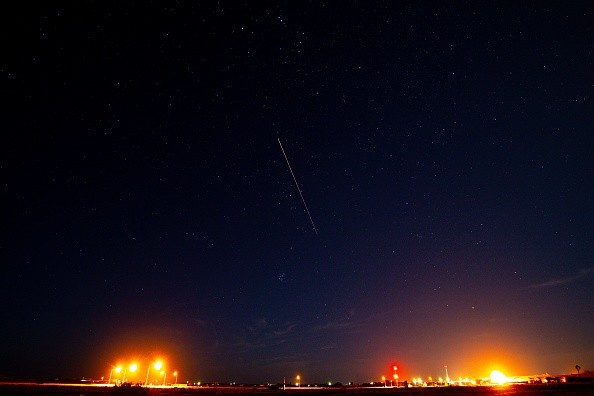Stargazers and astronomy lovers found a mesmerizing sight of a fireball-looking and burning asteroid that unfolded in the skies of the Southern United Kingdom and Northern France.
The sighting is rare as no severe weather conditions and storms could blanket the view.
Burning Asteroid
According to AccuWeather's report, stargazers managed to anticipate the stunning display of fireballs, unlike other events of falling asteroids.
In the previous Tweet, ESA Operations reported that a one-meter asteroid was detected, adding that it could fall to the planet. The projected areas were Northern France.
Early detection and prediction of asteroids are considered rare. The growing and advancing field of science and asteroid centers have helped to detect the asteroids striking Earth.
AccuWeather and the American Meteor Society (AMS), the asteroid rock had a diameter of one meter.
Recently, CNN reported that scientists discovered about five new meteorites measuring 17 pounds.
Researchers will bring the discovered meteorites to the Royal Belgian Institute of Natural Sciences in Brussels for further study.
Did you know? More facts about fireballs and meteorites

According to AMS, fireballs are bright meteors that fall from the sky. People who could witness the fireballs and images should report to the American Meteor Society for study purposes.
The report also added that the fireball event becomes rare when it appears brighter. Although meteors can happen often, they are not noticeable due to daylight or in far-flung areas.
AMS also explained that fireballs could also generate sounds, which are electrophonic sounds and sonic booms.
On the other hand, meteorites are also common occurrences on Earth.
According to the National Aeronautics and Space Administration (NASA), the estimated number of meteorites that unload on Earth could be 48.5 tons.
Meanwhile, asteroids refer to inactive rocks. NASA explained that a gigantic meteorite strikes Earth every 2,000 years.
In addition, the Solar System Exploration explained that about 50,000 meteorites were discovered on Earth.
Meteorites have been essential for scientists and researchers to study the solar system, which could help unravel more discoveries about space.
Astronomical events in February 2023
On the other hand, February has much-awaited astronomical events. In January 2023, the full wolf moon (micro moon) appeared in the sky.
Meanwhile, Nature World News reported that a snow moon encircled with a halo unfolded during the first week of February.
According to Almanac, the snow moon is February's full moon as the month has the most snowfall.
Other names for the snow moon are Eagle Moon, Sugar Moon, Lenten Moon, Sore Eyes Moon, Goose Moon and Crow Comes Back Moon.
On February 17, there is a chance that stargazers can see a rare astronomical meetup of the Moon and Mars.
Meanwhile, stargazers can also expect the emergence of worm moon on March 7. The worm moon could be bigger than the snow moon.
Furthermore, stargazers waiting for the astronomical events this month should bring the best camera they can have.
Checking the weather conditions and dates of the events are also helpful.
Related Article : First Week of New Year Unfolded Full Wolf Moon in Sky
For more similar stories, don't forget to follow Nature News.
© 2025 NatureWorldNews.com All rights reserved. Do not reproduce without permission.





